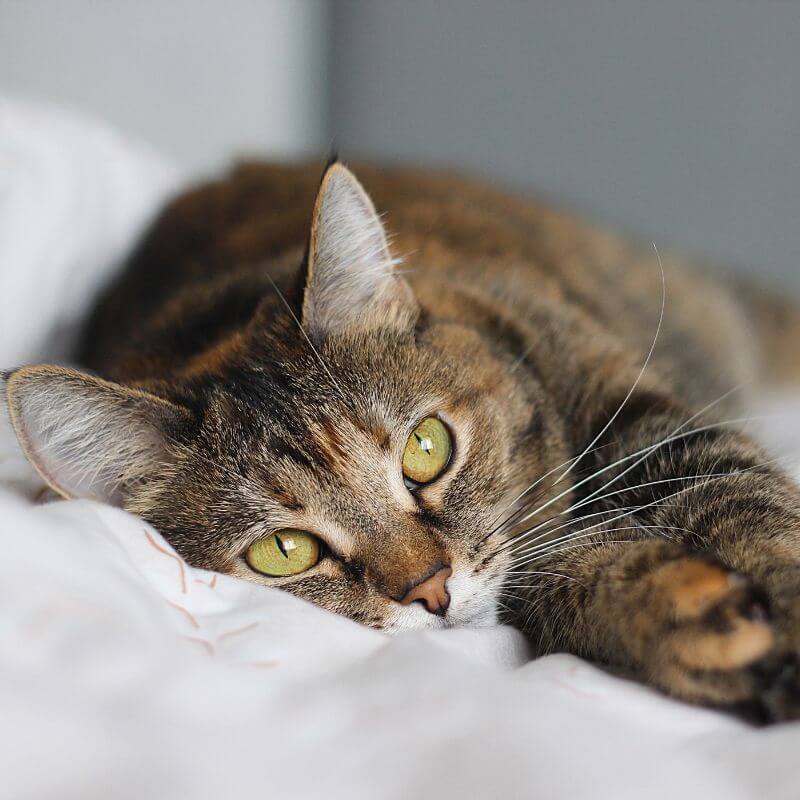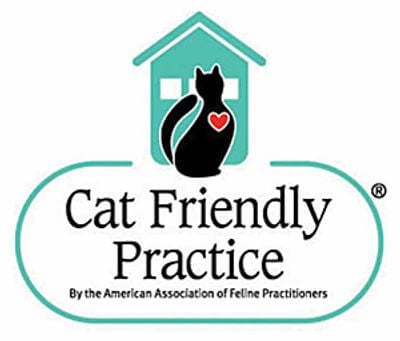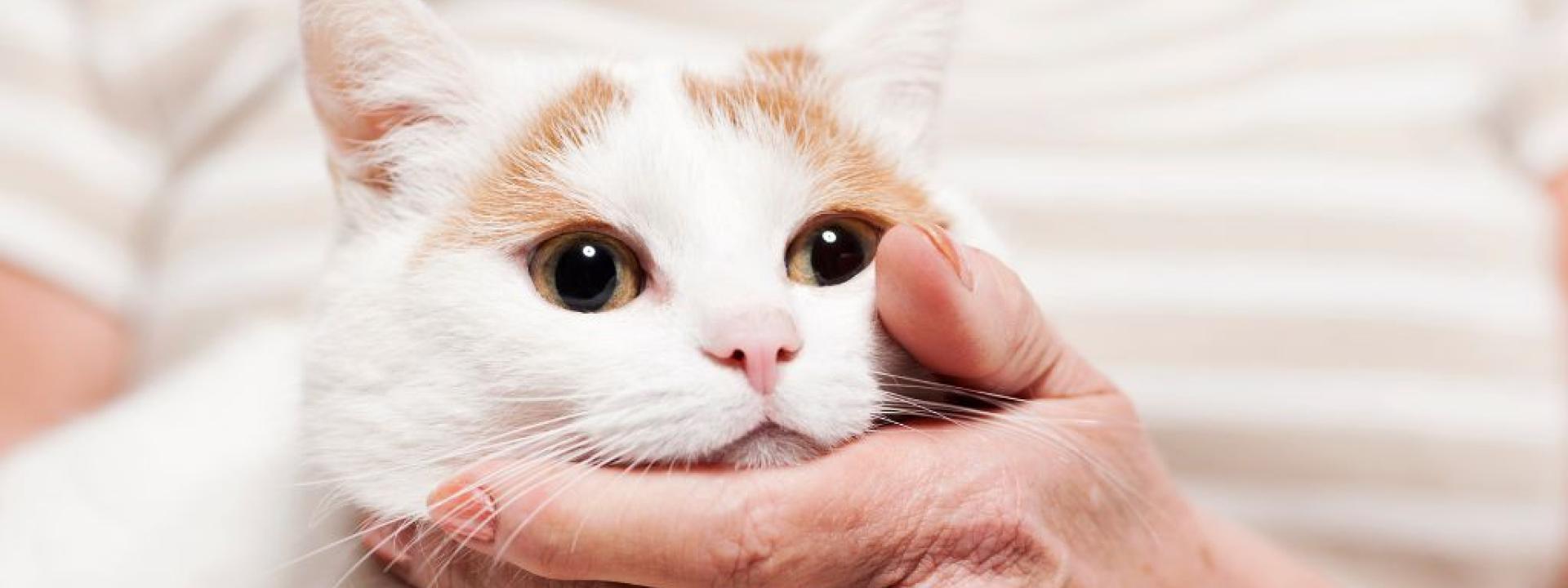Kidney disease in cats (also known as renal disease) is a very common problem for our feline friends. While it mostly affects older or geriatric cats, younger cats can be affected as well, making it a disease that every cat owner should have on their radar. In fact, approximately 1 in 3 geriatric cats have renal disease, meaning many cats may develop the condition as they age.
One of the most common misconceptions I hear owners say when I discuss renal disease is that their pet is urinating, so its kidneys are working just fine. However, this is simply not true. Both cats and dogs will typically lose about 75% of their renal function before they show clinical signs of advanced kidney failure, such as infrequent or strained urination. If your pet is not urinating, it is because the kidneys have stopped making urine. This means that the kidneys have failed and can often not recover.
To better help owners understand kidney disease in cats and how to spot it early, I’m going to be breaking down everything you need to know about your cat and how its kidneys function.
Understanding the Two Types of Renal Disease in Cats: Acute and Chronic
Acute renal disease can affect cats of all ages. It occurs when your kitty has an acute/sudden injury to their kidneys. Possible causes include trauma, anti-freeze ingestion, toxin ingestion, an infection, etc. Cats that suffer from acute renal disease are often very ill and may stop producing urine. When urine production stops, the prognosis is usually very poor. With acute renal disease, it’s important that it is diagnosed quickly and treatment starts as soon as possible. This helps protect the kidneys and gives your pet a better chance of a full recovery.
Chronic renal disease is more commonly seen in middle-aged to older cats. It occurs over the course of time as the kidneys stop functioning properly. Cats with chronic renal disease tend to compensate for months to years. Eventually, mild signs of illness and dehydration will occur before full-blown signs of renal disease may be noticed by owners. Chronic renal disease can be an aging change, but it can also be caused by other things, such as a kidney stone, cancer, polycystic kidney disease, or other conditions.
What Causes Kidney Disease in Cats?
The causes of kidney disease in cats will depend on whether their kidney problems are acute or chronic. Because acute kidney disease in cats is very sudden, coming on over hours or days, it often results from very recent damage to the kidneys, like ingestion of toxins or poisoning. Anti-freeze, certain medications, and toxic plants like Lilies can all result in kidney damage that triggers acute kidney disease in cats. Other common causes of acute kidney disease include severe infections, obstructions that prevent urine flow, and dehydration or shock – which can lead to reduced blood flow to the kidneys – can all result in renal damage.
On the other hand, chronic kidney disease in cats, which develops slowly over time as cats age or medical conditions develop, has triggers that aren’t commonly related to recent damage. As we discussed, one of the main causes of chronic kidney disease is age – as our cats grow older, their kidney function can naturally decline, leading to this chronic health issue. However, there are also other factors outside of age that can influence the development of chronic kidney disease in cats. For example, there may be a genetic predisposition for cats to develop kidney disease, with certain breeds, like Persians, Siamese, and Abyssinians, seeming to be more prone to kidney issues. Other chronic health issues or underlying medical conditions can also impact kidney function and result in chronic dysfunction. Primary culprits are often recurrent urinary tract infections, high blood pressure, and diabetes, among others.
Cat Kidney Disease Symptoms
Early signs of kidney disease in cats (or chronic renal disease) include increased thirst and larger wet spots of urine in the litter box. Your pet may also lose a subtle amount of weight. Cats with moderate to severe chronic renal disease may show decreased appetite, noticeable weight loss, decreased grooming, vomiting, lethargy, paler gums, bad breath, and noticeably increased thirst and urination.
Early signs of kidney problems in cats can sometimes be detected when a veterinarian does a physical exam on your pet. Your veterinarian may notice abnormal kidney size, pain when palpating your cat’s kidneys, or may find stones in the urinary tract. Another useful diagnostic tool is blood work and an analysis of your pet’s urine. Blood work and a urinalysis will often shed light on how well your cat’s kidneys are functioning.
If your veterinarian discovers that your cat has renal disease, treatment is often initiated immediately. What type of treatment is chosen for your pet depends on how advanced the renal disease is and what the owner is willing to do. Treatment can range from something as simple as changing your cat’s food to giving fluids and other medications at home.
A Real Case of Feline Kidney Disease: Our Patient Bella
Bella was a beautiful 17-year-old Himalayan cat that began seeing me in September of 2015. The owners were new to the area, and they were concerned because Bella  was not acting like herself. One of the owners had been away for several weeks in August, and when she returned, she felt that Bella had lost a lot of weight and her appetite wasn’t what it used to be. On exam, her gums appeared to be a paler pink than I would normally expect, and her kidneys felt smaller than normal. Blood work was done, which showed that Bella was anemic (low number of red blood cells) and she had elevated kidney values. In Bella’s case, her anemia was caused by her renal disease.
was not acting like herself. One of the owners had been away for several weeks in August, and when she returned, she felt that Bella had lost a lot of weight and her appetite wasn’t what it used to be. On exam, her gums appeared to be a paler pink than I would normally expect, and her kidneys felt smaller than normal. Blood work was done, which showed that Bella was anemic (low number of red blood cells) and she had elevated kidney values. In Bella’s case, her anemia was caused by her renal disease.
Treatment plans were discussed, including further diagnostics with an ultrasound, diet change, giving subcutaneous fluids, and using a medication to help regenerate Bella’s red blood cells. The owners decided against the ultrasound but were open to treating Bella’s anemia with medication, doing subcutaneous fluids, vitamin B12 injections, changing her diet, and a long list of other things. Bella was very lucky because her owners cared very deeply for her and wanted to give her every opportunity possible.
Over the course of the next six months, we were able to resolve Bella’s anemia and keep her kidney values stable. Unfortunately, as is often the case with geriatric patients, other health issues came up, and Bella made her journey over the Rainbow Bridge this March.
Bella’s story is on the extreme end of the spectrum in terms of the care that she needed. Most of my renal patients don’t need such an extensive list of treatments. I have several geriatric cats who were diagnosed with renal disease very early on because of their routine senior blood work. In these situations, I have maintained them by just switching their diet and monitoring their kidney values every three months. I also have patients who fall somewhere in between with their treatment plan.
Unless your pet has acute renal disease that is caught early, this is not a curable disease. However, there are steps that can be taken to help make your pet comfortable and give them a good quality of life. Renal disease does not automatically mean your cat has a death sentence. By making sure your pet has annual exams and by doing routine blood work when appropriate, renal disease, as well as other diseases, can often be caught early. This, in turn, gives your pet the chance of a better outcome and a longer, healthier life.
If you have questions and you'd like to reach out to us, you can call us directly at (603) 287-1181, or you can email us at [email protected]. Don't forget to follow us on social media Facebook, Instagram.



